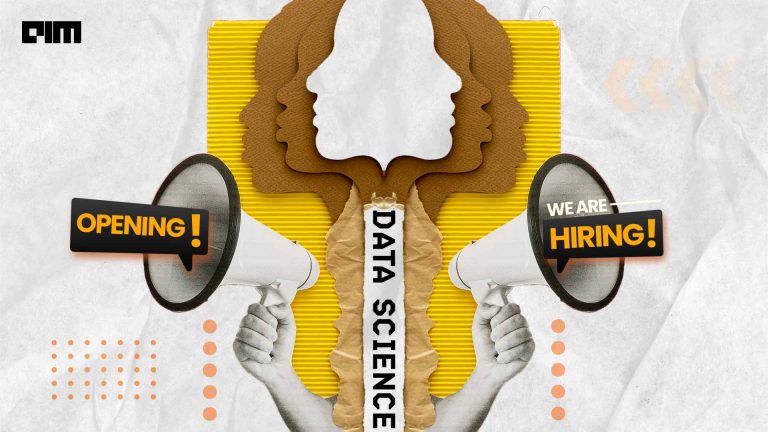The Indian banking sector has embraced emerging technologies that are disrupting the financial landscape. Leading Indian banks such as SBI, HDFC, Axis Bank, Yes Bank and ICICI Bank have taken the lead in deepening their tech stack. Today, banks hire thousands of technologists and have prioritised IT hiring over other divisions. IT professionals with deep knowledge of programming languages are in high demand. In India, we have 5 million developers who still rely heavily on Java, C++ and Python. Besides these popular programming languages, there are other functional languages which can earn developers huge pay cheques. In this article, we will list down the lesser known programming languages that form the backbone of the banking sector.
Erlang
Originally developed in 1986, Erlang was open sourced in 1998. This multi-purpose language is used primarily for developing distributed systems and doesn’t have a wide developer following in India. The programming language is one of the core coding techniques in the banking sector because of its distributed, fault tolerant, soft real-time, numerous applications and hot swapping suitability for system characteristics.
Erlang has some essential data types:
- Integers: The programming language follows the arbitrary-precision arithmetic model which allows only limited inter and arithmetic memory on the machine. The integers are represented as series of decimal digits
- Atoms: This datatype is used within a program to denote distinguished values. Atoms are scripted as strings of successive alphanumeric characters, the initial character being lowercase. They can contain any character if they are included within single quotes and an existing escape convention which permits any character to be used within an atom Atoms are not to be used to collect garbage and should be used carefully, especially if they are using dynamic atom generation
- Floats: This data type uses the Floating point numbers of the IEEE 754 64-bit representation
- References: these are universally unique symbols whose function is to compare for equality
- Ports: The data types are used to communicate with the external world
- Tuples: Tuples are containers where the assigned number of Erlang data types cannot be changed
- Lists: Lists are containers where the assigned number of Erlang data types can be changed
- Maps: Maps consists of a variable number of key-value associations
- Records: Records allows the user to associate a tag with each of the elements in a tuple
- Strings: Strings are scripted as doubly quoted lists of characters
- Binaries: A binary is a series of bytes which boost space-efficient way of storing binary data
- Pids: known as process identifier – a Pid is created by the Erlang primitive spawn for the reference process
Haskell
Haskell made its first appearance in 1990 and has an updated Haskell version known as Miranda. Primarily used for research and financial industries, Haskell is a standardised, general purpose, core functional language with less semantics and strict static typing. Because of its lazy evaluation, Lambda expression, corresponding patterns, list evaluation, type classes and type polymorphism the language can be used to develop typical functional language models having no back draws. The important features and applications of the Haskell programming are:
- Being an open source, Haskell supports multiple implementations
- Capable of running both interpreter and native code compiler of GHC(Glasgow Haskell Compiler)
- Haskell has an updated community with more than 5,400 third party open source libraries and tools which are available in the online package known as Hackage
- Due to its strong compiler, Haskell can be used for developing cryptocurrency algorithms
- The multiple dimensional features of Haskell are used to develop O.S prototype languages
- The Utrecht Haskell Compiler(UHC) is used to support the features and experimental extensions of Haskell by using its attributes technique for research purpose
Clojure
This powerful, general purpose programming language was released in 2007. The key features of this programming script are its dynamic and functional oriented operations. The language uses the Lisp programming technique of the Java platform. One of the unique features that Clojure exhibits is that it treats code as data with the support of the Lisp macro system. It’s a highly demanded technical language in the financial IT sector as it integrates with the Java programming language. Some of the features and applications of Clojure are:
- As the entire prototype is built on the concept of identities and immutable states, Clojure allows parallel operations
- The Clojure community executes Leningen to achieve project automation and supports maven integration. These are very useful in project package management
- The algorithms of this language first purses attribute into data structures before they are compiled
- Clojure supports literal syntax for maps, sets, lists and vectors in the form of data structures
- It supports multi-methods, interfaces, polymorphism and data type system using existing records
- It addresses the expression problem by exhibiting acute-performance and dynamic polymorphism
Java
Known as the golden child for investment banks, Java is the most in-demand programming language and has dominated the coding landscape for almost a decade. However, over the last two years, the demand for this dynamic language has dropped down. Some of the reasons for this trend may be the emergence of new and efficient programming languages and industries preference shifting toward data science, artificial intelligence and analytics. Still, Java is a leading technology in the banking sector as some of the banking web ports run their customer fronted portal using java applets. Some of the features of Java programming language are:
- Compatibility and portability
- Simple object-oriented mechanism
- Being platform independents allows users to run java on multiple platforms
- Robust performance with high security
- Free from dependent attributes, java has a neutral architecture
- Allowing users to create distributed applications using RMI and EJB
- Supports multiple threading: executing programs concurrently
Python
Python has gained massive popularity in the FinTech sector and the language is used to build maintenance scripts, data analysis, analytics algorithms and web-based services. Python even has its set of drawbacks like slow execution and moderate runtime. These drawbacks can be addressed when Python is interfaced with C++ to build frontend from abstracting solutions from the existing C++ codebases. Some of the top features of Python are:
- Availability of numerous data types
- supporting object-oriented programming with classes and multiple inheritances
- Allowing the user to categorise code into modules and packages
- supporting raising and catching exceptions, which results in effective error handling
- Presence of strong and dynamic data
- Providing interface programs by embedding into an application



















































































